Picture yourself at the base of a staircase that looks like a rainbow come to life. That’s exactly how I felt staring up at the Scalinata di Santa Maria del Monte in Caltagirone, Sicily. Every one of the 142 steps bursts with its own pattern of colorful ceramic tiles, making it easily one of the most dazzling staircases I’ve ever seen.
The Scalinata isn’t just beautiful—it’s a living piece of art from 1608, and it really shows why Caltagirone gets called Sicily’s capital of ceramics. Each step has its own story, told through a wild mix of designs and patterns. I kept pausing to snap photos of the intricate tilework, turning what could’ve been a quick climb into a slow, hour-long wander.
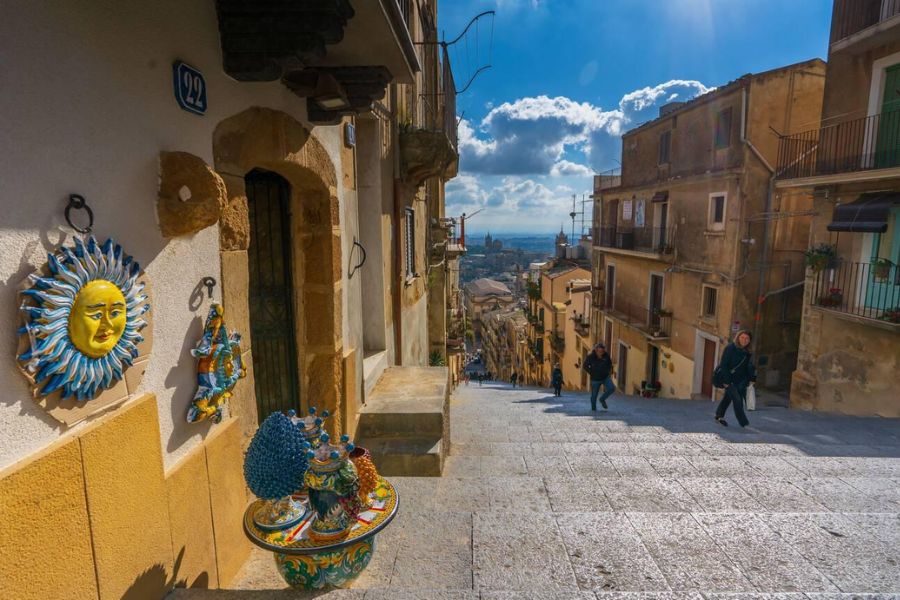
My legs started to protest around step 100, but the sweeping view over the old town at the top was a total payoff. Sometimes, locals light up the whole staircase with candles for festivals, but honestly, even on a regular day, it’s a vibrant spot that just oozes Sicilian artistry in a way few places can.
Discovering Santa Maria del Monte
The Scalinata di Santa Maria del Monte in Caltagirone, Sicily, left me breathless—partly from the climb, but mostly from just how gorgeous it is. This staircase wraps together history, art, and culture in a way that’s hard to forget.
History of the Iconic Staircase
They started building the staircase back in 1608 to connect Caltagirone’s lower and upper parts. It began as a simple set of steps but eventually grew into the masterpiece you see today.
In 1954, local artists decided to go all out and covered each of the 142 steps with hand-painted ceramic tiles. That move did more than just decorate—it honored the town’s deep-rooted ceramic tradition.

Twice a year, the staircase transforms for special festivals. During the Feast of Saint James in July, thousands of oil lamps light up the steps in mesmerizing patterns. In May, the Scala Infiorata festival covers the stairs in a blanket of flowers.
Architectural Marvels and Baroque Style
All 142 steps stretch about 130 feet long, and each one flaunts a different ceramic pattern. You’ll spot everything from sharp geometrics to lush florals and scenes straight out of Sicilian legends.
Baroque flair jumps out at you in the ornate decorations and the dramatic look of the whole staircase. It kind of tricks your eyes, making the steps seem to flow down from the Church of Santa Maria del Monte like a colorful waterfall.
The church at the top is a classic example of Sicilian baroque, with its fancy façade and bell tower. Together, the church and staircase blend spirituality and art, which feels so true to the baroque vibe.
I couldn’t help but admire how the staircase works as both a pathway and an open-air museum of ceramic art.
Location: Sicily’s Cultural Heart
Caltagirone sits right in the middle of Sicily, about 43 miles from Catania. The name comes from the Arabic “qal’at-al-ghiran,” or “castle of vases,” which just screams ceramics.
The staircase anchors the town, linking its historic neighborhoods. When I finally reached the top, the countryside opened up—a patchwork of fields and distant hills that just begged for a photo.
Caltagirone is part of the “Late Baroque Towns of the Val di Noto” and has UNESCO World Heritage status. That nod celebrates its stunning baroque buildings and cultural weight.
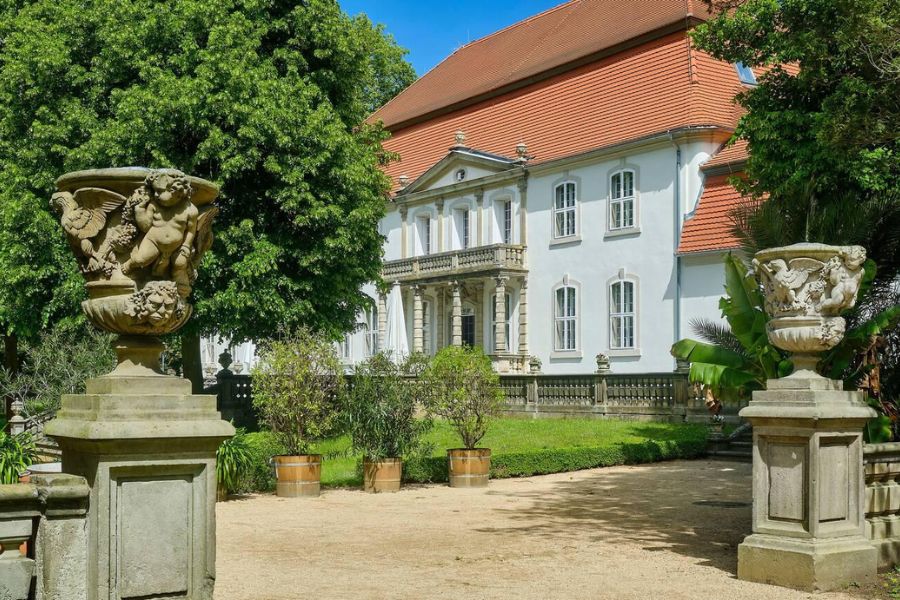
The area around the steps buzzes with ceramic shops, cozy cafés, and artisans showing off their work. I found mornings and late afternoons were the best times to visit—not just to dodge the crowds, but to escape the brutal Sicilian sun in summer.
Embarking On My Colorful Journey
Standing at the foot of Santa Maria del Monte, I felt a mix of excitement and a hint of nerves. Those 142 ceramic-tiled steps stretched up like a bright ribbon through the old town.
First Impressions and Personal Experiences
The morning sun made the tiles sparkle in colors I didn’t even know could go together. Each step showed off a different design, reflecting Sicily’s deep artistic roots.
A local shopkeeper leaned over and told me, “It’s best to come early.” He was right—by 9 AM, small groups of travelers were already gathering.
My first step onto the staircase felt almost like a ritual. The tiles felt cool under my feet, and I noticed how no two were exactly alike.
What really got me was the sound—a soft chorus of camera clicks and low conversations in a dozen languages. Everyone seemed to respect the place, almost like it was a gallery.
The Climb: Step by Step
I took my time, stopping every few steps to check out the changing tile patterns. The lower steps showed off blues and yellows in geometric shapes, while the middle ones told stories from Sicily’s past.
By step 70, I needed a water break. Luckily, I’d brought a small bottle. The view from there gave me a perfect shot of the town sprawling out below like a patchwork quilt.
Other climbers became instant friends. We swapped photography tips and pointed out our favorite tiles.
By step 100, my calves were burning, but the views just kept getting better. The higher I went, the more of the countryside I could see.

The last twenty steps had the most detailed tiles—little masterpieces about Sicilian folklore and religion.
Travel Tips for Walking the 142 Steps
Best Times to Visit:
- Early morning (before 9 AM) to beat the crowds
- Late afternoon for that golden light on the tiles
- May, when flowers decorate the stairs for festivals
What to Bring:
- Water bottle (absolutely needed in summer)
- Good walking shoes with grip
- A camera with lots of storage
Give yourself at least 45 minutes if you want to take it all in, longer if you’re snapping lots of photos. The steps get slippery after rain, so watch your footing.
There are small cafés at both ends of the staircase. I treated myself to a cold granita at the top, savoring the view as a sweet reward for making it up all 142 steps.
Artistic Treasures Along the Way
Santa Maria del Monte’s staircase isn’t just about getting to the top—it’s an open-air museum that celebrates Sicily’s artistic heritage. Every step tells a story in color and detail that kept me hooked the whole way up.
Vibrant Tiles and Decorative Ornamentation
The 142 tiled risers are the showstopper here. I couldn’t believe how every single step had its own pattern, making the climb a visual adventure. The tiles show off classic Sicilian motifs—geometrics, florals, and even historical scenes—each one painted by local hands.
As I climbed, I passed ceramic workshops where artists worked right in front of me. Watching them paint and glaze clay was honestly mesmerizing.
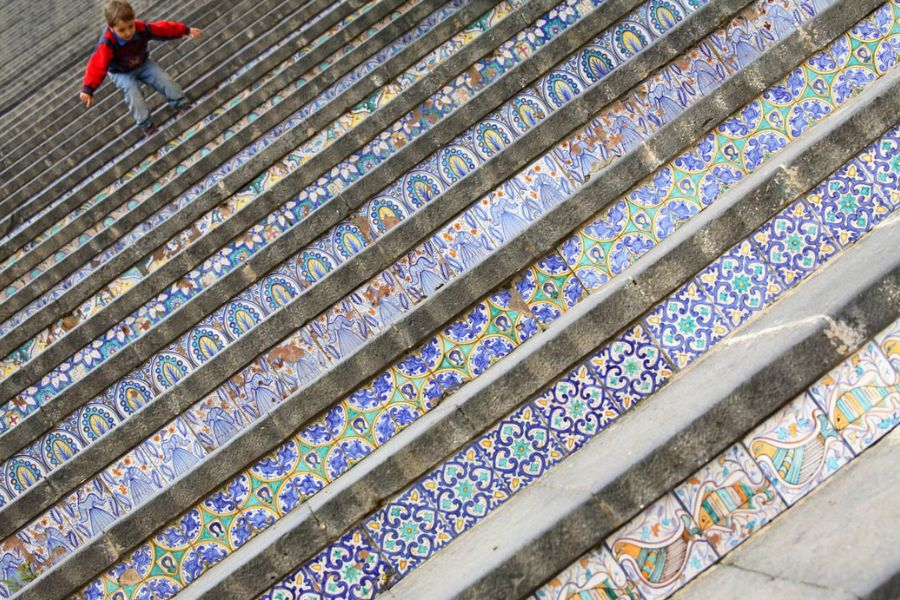
The artistry doesn’t stop at the steps. The buildings around the staircase are covered in ceramics too, so the whole area feels like one big, connected artwork.
Statues and Renaissance Inspirations
Statues break up the climb, offering both art and a chance to catch your breath. I stopped often to admire these sculptures, some of which have watched over the staircase for centuries.
You can spot the Renaissance influence in the way the statues are shaped—classic proportions and those idealized faces that defined Italian art in the 15th and 16th centuries. Many show religious figures, like angels and saints, keeping a quiet watch over everyone climbing the stairs.
I loved how the light changed the statues throughout the day. Shadows would shift and suddenly a face or hand would pop out, almost alive.
Famous Artists: Michelangelo and Raphael
Michelangelo and Raphael never worked here, but you can feel their influence in the staircase’s style. The sculpted elements channel Michelangelo’s knack for anatomy and emotion.
Some ceramic panels along the stairs echo Raphael’s balanced, harmonious look. I spotted scenes that reminded me of his Vatican frescoes.
Local guides showed me how Sicilian artists blended these big names’ techniques with their own traditions. That mix gives the staircase its unique Sicilian flavor.

Today, the tradition lives on. Contemporary ceramic artists still have workshops here, and you can buy original pieces—a perfect keepsake from this colorful climb.
Santa Maria del Monte in a Wider World
Santa Maria del Monte’s ceramic staircase in Caltagirone acts as a real cultural crossroads. Those 142 decorated steps tell a story that stretches way beyond Sicily, weaving into the broader tapestry of Mediterranean art and architecture.
Influences from the Mediterranean and Beyond
The ceramic art on Santa Maria del Monte draws from all over. As I climbed, I spotted patterns that felt Greek, along with Moorish motifs straight out of North Africa.
Sicily’s spot in the Mediterranean made it a mix of cultures for centuries. The ceramic tradition here borrows techniques from Rhodes in Greece and Spanish regions famous for their tiles.
Compared to mainland Italy, the colors here are bolder—think Barcelona or Naples, with those vivid blues and yellows popping against white.
Connections to Italy, Greece, and Spain
Santa Maria del Monte’s ceramic work links up with other Mediterranean art hubs. Artisans in Caltagirone have shared tricks and techniques with artists in Rome and Athens for generations.
I’ve seen similar tiles in Taormina and Catania, but nothing quite as jaw-dropping as this staircase. Some patterns reminded me of pieces I saw in Malta, just a ferry ride away.
Spanish influence stands out in the painted tiles. The geometric designs could almost be from Barcelona’s Park Güell, but with a twist that’s all Sicilian.

Key Connection Points:
- Greek-inspired geometric patterns
- Spanish-style color palettes
- Italian ceramic techniques
Travel Routes: From France to Malta
Santa Maria del Monte sits along what used to be a major Mediterranean trade route. These days, it’s a highlight on many southern European travel itineraries.
Travelers from France often wind through Monaco, down the Italian coast, and then cross over to Sicily. If you’re coming from mainland Italy, I’d suggest the drive from Messina—those coastal views are worth every minute.
Cruise ships dock at Catania, sending day-trippers to Caltagirone. I ran into tour groups from Gibraltar and even the UK.
For a real ceramic adventure, try a trip from Barcelona through southern France, down Italy, across Sicily, and over to Malta. Watching the styles shift along the way tells its own story of cultural exchange.
Stories Embedded in the Steps
The 142 steps of Santa Maria del Monte aren’t just architecture—they’re storytellers. Each tile peels back a layer of Sicilian history, from ancient manuscripts to volcanic eruptions that have shaped Caltagirone.
Manuscripts, Legends, and Local Culture
As I climbed, local guides pointed out tiles showing scenes from ancient manuscripts kept in nearby monasteries. These vibrant ceramics tell tales from the Arab-Norman era, when Sicily was a true crossroads.
“Each step is a chapter in our history,” Maria, a ceramic artist whose family has crafted tiles for generations, told me.
The 25th step features the legend of the “Cocu,” a mythical bird believed to protect the town. I watched elderly locals touch this tile for luck as they passed.
The ceramics capture local festivals too, especially the Luminaria, when thousands of candles light up the whole staircase in glowing patterns.
World War I and Historic Moments
A few steps along the staircase pay tribute to Caltagirone’s role in World War I. On step 87, you’ll spot a scene of local soldiers leaving for the front.
“My grandfather’s name is listed here,” a shopkeeper told me, pointing out a memorial tile that honors the town’s fallen soldiers.
The 19th century gets its due, too. I came across tiles depicting Giuseppe Garibaldi’s visit during Italian unification. His famous red shirt pops in vivid ceramic—such a striking detail.

Allied bombing during WWII damaged parts of the staircase. Local artisans brought it back to life, using traditional methods to recreate those historic scenes.
Natural Forces: Earthquakes and Mount Etna
Some tiles tell the story of the 1693 earthquake that devastated eastern Sicily. The rebuilding that followed gave Caltagirone its signature baroque look.
“Our town has fallen and risen many times,” my guide said, gesturing at step 112. That tile shows buildings collapsing during the quake.
You can spot Mount Etna from the top of the staircase if the weather’s clear. The volcano shows up in the ceramics too—ancient eruptions burst in dramatic reds and oranges.
One tile really caught my eye: locals using volcanic soil to grow those famous Sicilian blood oranges. That mix of destruction and bounty feels like the heart of Sicily’s spirit.
From Summit to Surroundings
When you finally reach the top of Santa Maria del Monte’s colorful staircase, you get more than just a great view. Suddenly, the whole surrounding area feels open for discovery.
Nearby Landmarks: Hercolaneum, Pompeii, and More
Not far from Caltagirone, I found the ruins of Herculaneum. Compared to Pompeii, it feels more personal—those preserved wooden beams and bright frescoes really pull you in.
Pompeii is a must-see, too. Walking its stone streets, I felt swept back to 79 AD, just before Vesuvius changed everything. The Roman Forum and mosaics offer a snapshot of daily life, frozen in time.
If you love history, the Palatine Hill gives you sweeping views and a peek at imperial palaces. I got lost for hours wandering those ancient halls, imagining the emperors who once called them home.
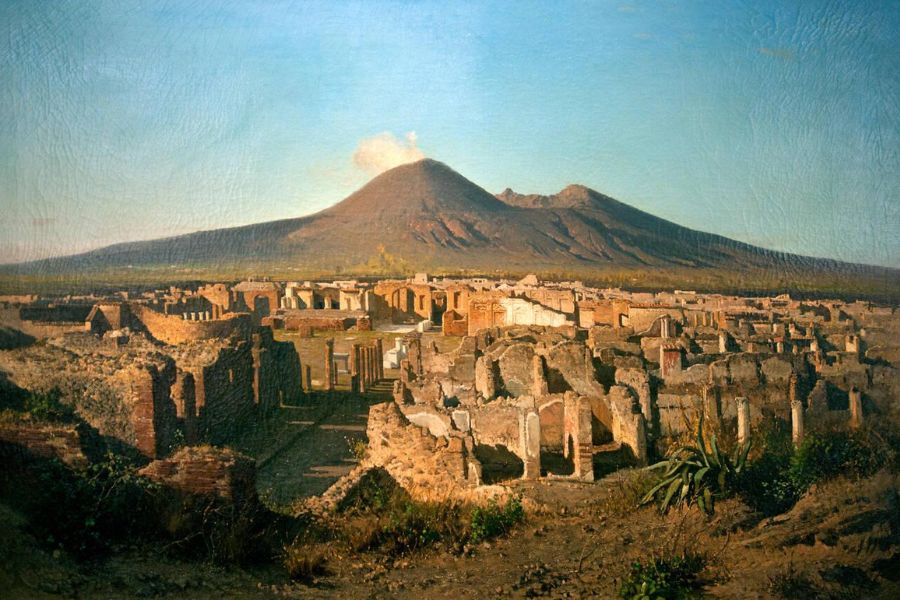
If your travels take you to Rome, the Tomb of the Unknown Soldier is worth a stop. It really drives home the weight of sacrifice and national memory.
Art, Science, and the Spirit of Exploration
The area around Santa Maria del Monte hums with creativity and curiosity. Local museums highlight the tools that shaped this region.
Caltagirone’s museum surprised me with its collection of old scientific instruments. I saw antique surveying gear and realized how early engineers mapped out the town’s unusual layout and those iconic staircases.
Art and science seem to go hand in hand here. In the ceramic workshops, you can watch techniques passed down for generations. Every piece feels like it’s telling a bit of the region’s story.
You can sense the urge to explore everywhere. Standing at the summit, I looked out over the landscape and couldn’t help but picture early settlers figuring out how to build a life here.
Resin, Luminosity, and Artistic Techniques
Caltagirone’s artists really know how to work with resin and light. In some nearby workshops, I watched artisans mix natural resins right into their glazes.
That process gives their ceramics a depth and shine you just can’t fake. The way light dances across these surfaces is honestly mesmerizing.
One artist told me they think a lot about luminosity when they design pieces for the famous staircase. When festival time comes around, hundreds of candles turn these works into glowing, almost magical displays.
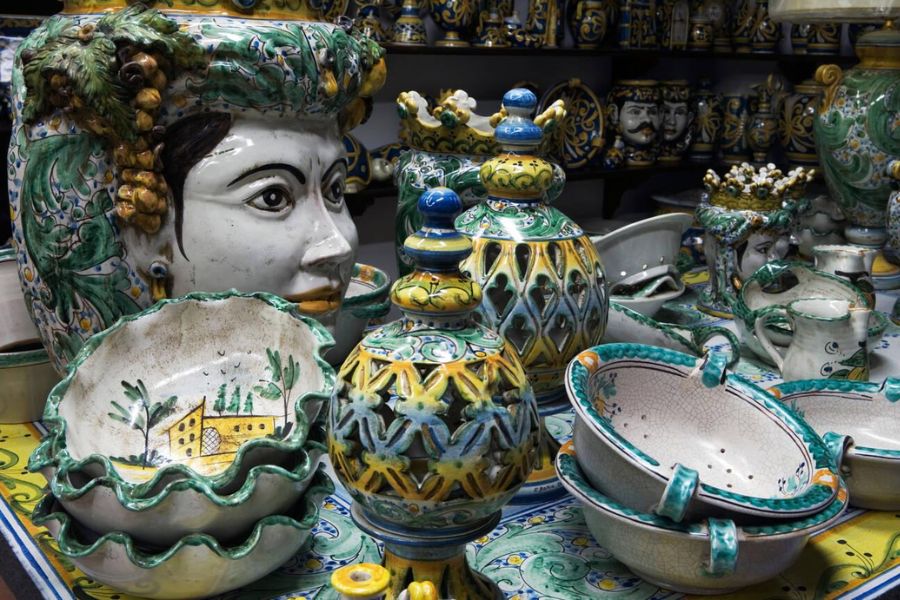
Traditional techniques include:
- Maiolica glazing: This creates a brilliant white background.
- Resin infusion: It adds depth and makes each piece more durable.
- Light-reactive materials: These elements change their look as the day goes on.
A lot of artisans still stick to methods from centuries ago. Some, though, like to mix in new materials here and there.
I ended up buying a small piece that really captures the colorful spirit of those stairs.

